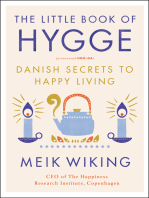0 ratings0% found this document useful (0 votes)
346 viewsBs 1014 1975
Bs 1014 1975
Uploaded by
Rajan SteevePigments for portland cement
Copyright:
© All Rights Reserved
Available Formats
Download as PDF or read online from Scribd
Bs 1014 1975
Bs 1014 1975
Uploaded by
Rajan Steeve0 ratings0% found this document useful (0 votes)
346 views15 pagesPigments for portland cement
Original Title
Bs-1014-1975
Copyright
© © All Rights Reserved
Available Formats
PDF or read online from Scribd
Share this document
Did you find this document useful?
Is this content inappropriate?
Report this DocumentPigments for portland cement
Copyright:
© All Rights Reserved
Available Formats
Download as PDF or read online from Scribd
Download as pdf
0 ratings0% found this document useful (0 votes)
346 views15 pagesBs 1014 1975
Bs 1014 1975
Uploaded by
Rajan SteevePigments for portland cement
Copyright:
© All Rights Reserved
Available Formats
Download as PDF or read online from Scribd
Download as pdf
You are on page 1of 15
7 BS 1014 : 1975
iy eee se
Specification for
9d Pigments for Portland cement
and Portland cement products
British Standards Institution
‘This Beith Standard, Raving besa approved by the Pmenis, Pins and Vannes Industry Standards Comite, was published
under the authority of the Heute hardin 29 August 1975
© Writish Standards tostitution, 1975
rst published Apsil 1942
fevision Apa 1961
Second revision August 1975,
ISHN: 0 50 OHS 9
Copyright
Users of British Standards are reminded that copyright subsists in all SI publications. No part of this publication may be
‘eroded in any form without the prior permission ia writing oF BSI. This does not preclude the fee wwe in the course of
Implementing the standard, of ncrssary details such as symbols and size, type or grade designations, Enguiies should Be
addressed to the BSI Sceretariat.
Contract requirements
Auention is drawn to the fact that tis British Standard does not purport o include all the necessary provisions of a coatract.
Revision of British Standards
In oder to keep abreast of progress in the industries concerned, Britis Standards are subjetto periodical review, Sugerstions
{or improvements will be recorded and in due course brought to the nti of tae committees cbarued with the tvisen oft
standards to which they rele,
British Standards are revised, when necesary. by the issue either of amendment slips or of revised editions ts important that
‘srs of British Standards should ascertain tha they are in pessession ofthe latest amendments or edions all aformacon os ail
£81 publications, numbering over 9000 wil be found in the BST Catalogue. This information is supplemented by details published
‘eich month in 8/ News of new publications, revisions nd amendments,
‘BSI Nes is avilile to Subscribing Members of the Institution. All other publications may be purchased direct fom Sales
Department. Enquiries concerning subseribing membership, which bas considerable advantages, willbe welcomed, and should Se
made to Subsritions Department. Both departments ae located at
Linford Wood, Milion Keynes MK14 6LE (Telephone 0908 220022; Telex 825777).
The flowing BSI reference relate the work on this standard
Committe ference PVC/I/2 Draft for comment 72/30536 DC
Co-operating organizations
‘hs Mements, Paints and Varnishes Industry Standards Committe, under whose supervision this British Standacd was preparsd,
‘consists of representatives from the following Goverement sopartments id smtife ad industri ongansatone
tush ¢ Asvciation “Oil and Colour Chemists’ Asiacition
Department ofthe eavironment Paigt Rewsreh Asscistion
*Defarinent or the Environment, Building Research =Paintmakers Assocation of Great Britain Limited
Felaiient, Post Once
Depron of Indastey Royal lnsttue of batish Architects
Depactnent of Indust, Laboratory of the Royal Instat of Publi Health and Hygiene
‘Govecnent Chen Society of Chemical Industry
Greater Landon Count ‘Titanium Pigment Monufacttrers Technical
stare ot Carrnin Telnalony Comte
Usndon Transport Hoenn *White Lead Manufacturer Association
Ministry af eters ‘Zine Development Association
Natoma Federation of Yad’ and Phamber “Zine Piment Development Association
Meri
"he Government deparinints snd sient nd indus organizations marked with an asters i the above lt, togethor with
Ihe follwing. wore dicetly reprexcnied on the counts entasted with te preparation of thi itsh Standen
BatshPrect Console Concrete Sacity
eaten and Concrete Associaton oiniless Flooring Assocation
(Coment Mokere Panel of Independent Consatants
‘Chenel insti Association
B008-6—0.24-8
S| BS 1014 : 1975
ES.
Specification for
Pigments for Portland cement
and Portland cement products
Amendments issued since publication
Amd. No. Date of issue | Text affected
British Standards Institution 2 Park Street - London W1A 2BS
Telephone 01-629 9000
Tolex 268993
BS 1014: 1975
Contents
Page
Inside front cover
Cooperating organizations
2
Foreword
Specification
Scope
References
Sampling
Agreed sample
5. Description
Composition
Required characteristies
Effect of pigment on Portland cement
products
9. Packaging 3
Appendices
‘A. Method for the determination of chromium
‘compounds content, expressed as Crz03 6
B. Method for the determination of iron
‘compounds content, expressed us Fe; Oy 6
Foreword
‘This British Standard provides specifications for a
‘ange of pigments suitable for the colouring of
Portland cement and Portland cement produets. The
Pigments specified may also be suitable for use with
‘other hydraulic cements but the use of the pigments
in these vements has not been covered in this British
‘Standard because experience in the use of these
‘cements with pigments is limited.
The pigments specified ure manufuctured efther
synthetically or from naturally oceurring mineral ores
‘This revision differs from the 1961 edition with
regurd to the following matters:
(a) owing to the decline of the magnesium oxy-
cloride flooring trade, reference to the use of the
pigments in this material has been replaced by
feference to their usage in mortar compositions
and ceinent products generally:
(b) because information on the previse content of
‘metal oxide ina pigment is not necessarily # guide
to its tinting stiength or hue, itis, therefore, per
mitted that materials with metal oxide contents
‘outside those specified may be supplied by agree-
‘ment between the contracting parties
(©) the section covering brown iron-manganese
oxide pigments has been widened to include the
‘how aanganese brown iron oxide pigments;
Page
. Method for the determination of titanium
dioxide content, expressed as TiO, 7
. Method of tes for the comparison of colour
and staining power 9
E. Method of test for effect on the setting
times of Portland cement 10
F. Method of test for effect on the strength
evelopment of Portland cement products 10
G. Notes on pigment dispersions 10
H. Notes on incorporation of pigments "
Tables
1. Required characteristics 4
2. Methods and masses of pigment to
be used 9
Figure
1. Nakazono reductor for determination
of titanium dioxide content 7
(@) the section relating to zine sulphide pigments
hhas been excluded because their use with cement
nas ceased to be significant;
() the section relating to mineral black pigments
hhas boen deleted because these pigments are no
longer available;
(D) neve clauses relating to phthalocyanine pigments,
blended pigments, and pigment dispersions have
been introduced; notes on pigment dispersions are
siven in appendix G;
(® the chemical methods of testing have been
‘revised and where possible are identical with those
in the specifications already published for pigments
for paint;
(a) appendices ae included for the first time to
cover respectively 2 comparative test for effect on
the setting times of Portland cement and a com-
parative test for effect on the strength development
of Portland cement;
notes on the incorporation of pigments in
Portland cement and Portland cement products
are given in appendix H.
QO
BS 1014 : 1975
ee
British Standard Specification for
Pigments for Portland cement and
Portland cement products
——
1. Scope
This British Standard specifies the requirements for
pigments for colouring Portland cement and Portland
‘cement products
NOTE 1. [eis chought that plement found wuiable for
Portland cement wil algo be suiable for supersiphate and
big alumina cements bat thei wages for sich porpote e
‘not coveted by this standard because of the limited experience
in the us of pizments with those coments should net be
Inferred, however, tat the pigments specified in this standard
not be satisfactorily used with coments ther than
land coment.
should be noted that certain cadmium pigments,
Pe
NOTE 2.
cobalt bue pigments and titan complex pigments ae sso
suitable for use wih Portland cement but bocaute oftheir
ost they wre generally not used for thie purpose,
2, References
‘The titles of the British Standards referred to in this
standard are listed on the inside back cover.
3. Sainpling
For the purpose of testing a pigment in accordance
with this standard, a sample of not less than 100 g
shall be taken and packed according to the method
described in BS 4726,
4, Agreed sample
‘The agreed semple referred to in table 1 and appen-
dix D shall be one and the same and shall comply in
all respects with the other relevant requirements of
this standard. The sample shall be packed in the
‘manner described in BS 4726 and shall be not less
than 100 g.
5. Description
5.1 Powders. The pigment shall be in the form of
dry. soft powder or in such a condition that it may be
readily reduced thereto by crushing it under a palette
knife without any grinding action being necessary.
5.2 Dispersions. By agreement between the contract-
ing parties the pigment may be inthe form of a slow
settling suspension of the pigment in water. Any dis-
persion which settles in storage shall be readily
re-dispersable by simple stirring or shaking,
6. Composition
‘The pigment shall consist essentially ofthe chemical
‘compound or compounds shown in table | and shall
‘ot contain compounds or other impurities, such at
Jead or zinc compounds, capable of affecting adversely
the setting and development of strength of Portland
cement. By agreement between the contracting parties,
limits for metal oxide content ather than those given
in table 1 may be specified
7. Required characteristics
‘The pigment shall have the characteristics and require:
‘ments specified in the appropriate column of table 1
8. Effect of pigment on Portland cement
products,
8.1 Setting time. The pigment, when used in the
maximum proportions recommended by the manufac-
turer, shall not be regarded as significantly affecting
the setting time of Portland cement products if, when.
tested in accordance with appendix E, the inital set-
ting time isnot les than 45 mia, the final setting time
‘not move than 10 hand the difference for both setting
times between the mixes with and without added
pigment not more than 36 min,
8.2 Strength development. The pigment, when used
in the maximum proportions recommended by the
‘manufacturer shall not be regarded as significantly
affecting the strength development of Portland cement
Products if, when tested in accordance with appen-
dix F, the mean compressive strength of the mix
containing the pigment does not differ by moze than
20 % from the mean compressive strength of the mix
without pigment
9. Packaging
Al packages containing the material shall be clearly
‘marked with the number of this British Standard,
BS 1014 :1975
1 3 06
Fou | 246s sane
sn $86
seu zoo | wu eso pony BL | 28a oemeue
“90
Sots | at
i
fod! tram ono
aot sxcunsttuou
z01 FORE] ons un spso
say nwa 0% Pouon sot
| i ag
foes oon
wa 0b
Soy seep] opremey
| wma eg
sew st a0 | optus pose _
on
nus see 54 Poa |
ropuon au)
ogi
sot Epon 1 snousioue
] “a 08
totes em
wnat
rer toes ea
smu 20 seu yore epowaN | pouen | -puode sg mpleday t26e | aprv0 won po
TUTTE
zor uw x56 | use p10
sous 50 epomen | poMAW | pasties y upubdsy to 2ruasy
| a
Doma: cares suomednp 104 | smpKod oa 19130 power noun
21810 po ei
(¢arou sep men Susuannbeg [SARE 70 tp wood
agnor oe
sopseroeieyo pauinbay “| aigey
BS 1014 : 1975
ey suo ka 2
‘puns si Jo swusuayn 1b 00g Ar
|.
cae Men OT | yds paste |
on opus
|
ony
seu B07 seu gor, epomsn | zpomen on suuesooreniga
oO oS :
BS 1014 : 1975
Appendix A
Method for the determination of chromium
compounds content, expressed as Crs,
AL Apparatus. The following apparatus is required.
Ad Zirconium orci, 60
A.L.2 Onemark volumetric flak, 500 mi, complying
‘withthe requirements of BS 1793,
ALS Meker or Teo burner.
A2 Reagents. The reagents ued shal be of recog
ved analytical reagent quality, Distilled water of
vnior of equal purity complying with the require
ments of BS 3978 shall be used
A2A Sodium peraxile,
22 Sulphuricorthophosphoric acid mixture. Mix
three parts by volume ofa 50 % (fs) sulphuce acid
solution with one pat by volume of orthophosphorc
acid (2 1.75).
2.3 Ammonium ferrous sulphate solution. Dissolve
80 of FeSO4(NI,), 80 6th O in water containing
50 ml of $0 (9) sulphorie acid and make ap to
1000 ml with wat
A.24 Potassium dicnomate solition, Dissolve
9.8715 gof KyCraOy in water and make up to
1000 ra with water
A2S Barium diphenylamincsulphonate indicator.
Dissolve Ig ofthe solid n 100 mi of sulphuric add
= 18,
AA3 Procedure. Weigh. tothe nearest milligram, about
2.9 g of the pigment previously dried at 105 °C into
tho siren eruible containing about 7 fof the
souiun peroxide and then adds Further similar quan-
tity of the latter. Mix the two components thoroughly
‘witha hss rod and then brush any adhering partes
fn the fod back into the erucible Heat the erucble in
the flame of a Meker of Telu burner and maintain
the contents ina molten sate fr I min with constant
swing of the melt. Allow to cool for 2 min, then
nmerse the hot erie in about 250 ml of water in
31400 ol beaker snd iomedistely cove the bear
wth watchs. Gently wace the beaker and con
tents until vigorous reation ceases, then remo the
eeibieand wish any soltion back into the beaker.
Gover the beakee witha watlvgass and boi! the
contents of te beaker fr 10 mi
Filler through an epen-textured filter paper an
wish the fier thoroughly with hot water Cool the
flats transfor it to the 800 ml one-mark volumetric
flask and makeup to the mack with water Pipette
50 lof this solution into» 500 ml conte! flask
Dilute this sap to 100 ml, bol for 20 min and
‘hen coo, Dilute to about 250 mi, aif with 30 ml
ofthe sulphucisthophosphorie aed mixture, coo!
toa temperature between 10 °C and 15 °C and add
by means of a pipette 50 ml of the ammonium ferrous
sulphate solution; then add 15 to 20 drops of the
barium diphenylarsinesulphonate indicator an titrate
with the potasium dichromate solution to purple
‘end: point lstng at lest 30 s,Carty outs blank
determination using a 30 l portion of the ammonium
fercous sulphate solution using the same conditions
without the addition ofthe chromium oxide sample
‘Ad Caleulation of Cras. Calculate the chromium
compounds content, expressed as Crg0y 28a percent-
age by mass, by meats ofthe formula
Gan)
sin =")
where
V1 isthe volume, in miliitres, of the potassium
dichromate solution required for titration of
the sample,
¥ isthe volume, in millilitres, of the potassium
dichromate solution required for the blank,
and
‘mis the mass, in grams, of sample taken,
Appendix B
‘Method for the determination of iron
‘compounds content expressed as Fe, 0;
B.1 Apparatus. The following apparatus is required,
Platinum erucible,
B.2 Reagents, The reagents used shall be of a recog:
nized analytical reagent quality. Distilled weter or
Water of equal purity complying with the requice-
‘ments of BS 3978 shall be used.
B21 Hydrochloric acid, d= 1.18.
B.2.2 Sulphuric acid, 50 % (m/m) solution.
8.2.3 Potassium hydrogen sulphate.
B.24 Stannous chioride solution, feeshly prepared by
dissolving 60 g of SnCl,2H, 0 in 500 ml of hydro-
‘chtoric acid (@= 1.18) and diluting to 1000 ml with
water.
B28 Mercurie chloride solution, saturated.
B26 Orthophosphorie acid|sulphurie acid mixture,
prepared by mixing 310 ml of sulphuric acid
(a= 1.84), 250 ml of orthophosphoric aid, HPO,
(@= 1.74) and 440 mal of water.
B.2.7 Barium diphenyleminesulphonate indicator,
prepared by dissolving 04 g of solid reagent in 100 ml
‘of water and filtering,
B28 Potassium dichromate, 0.1 solution.
* Zirconium ccaibles say be obtained from Imperkl tals Hndusres Lid, Birmingharn, Aleratively, «leet orale erable
ty be un
ble iter paper iva Whatman No, 54
ta
8.3 Procedure. Weigh, to the nearest miligram, 0.3 g
10044 gof the pigment dried at 105 °C and transfer
{to a 500 mi conical flask. Add 25 ml of the hydro-
chloric acid and heat the mixture until solution is
effected. If the material is difficult to dissolve add
10 ml ofthe 50 % sulphuric acid to assist solution.
Filter off any coloured siliceous residue, ignite in
the platinum crucible and fuse with the potassium
hydrogen sulphate, Extract the melt with water con-
taining a litte hydrochloric acid, keeping the total
volume as small as possible and add to the main
solution,
Bring the solution to the boil and, keeping the
solution hot, add the stannous chloride solution drop
by drop until the solution is colourless. Then add a
further two drops.
NOTE. Ii important that only x very light excess of
stannous chloride solution shouldbe added ony alight
Sky white precipitate should be obtained winen the mercuric
horide solution is rubsequontly added I's hemvy precipita
af erey ov blk colou i obtained, too much stannous
thlride has been add and the determination shoud be
‘repeated from the beginning.
Cool the solution rapidly to room temperature
and add 5 ml of the mercuric chloride solution. Mix
thoroughly and wash down the sides ofthe flask with.
cold water. Allow the solution to stand for about
{min and add 40 ml of the orthophosphoric acid/
sulphuric acid mixture. Dilute the solution to between
100 ml to 200 mi, according to the amount of iron
present.
‘Add 0.2m to 0.4 ml of the barium diphenylamine-
sulphonate indicator and titrate with the O.1N
potassium dichromate solution until the solution
begins to darken, Complete the titration by adding
the 0.1N potassium dichromate solution diop by
You might also like
- The Subtle Art of Not Giving a F*ck: A Counterintuitive Approach to Living a Good LifeFrom EverandThe Subtle Art of Not Giving a F*ck: A Counterintuitive Approach to Living a Good LifeRating: 4 out of 5 stars4/5 (5867)
- The Gifts of Imperfection: Let Go of Who You Think You're Supposed to Be and Embrace Who You AreFrom EverandThe Gifts of Imperfection: Let Go of Who You Think You're Supposed to Be and Embrace Who You AreRating: 4 out of 5 stars4/5 (1094)
- Never Split the Difference: Negotiating As If Your Life Depended On ItFrom EverandNever Split the Difference: Negotiating As If Your Life Depended On ItRating: 4.5 out of 5 stars4.5/5 (866)
- Grit: The Power of Passion and PerseveranceFrom EverandGrit: The Power of Passion and PerseveranceRating: 4 out of 5 stars4/5 (597)
- Hidden Figures: The American Dream and the Untold Story of the Black Women Mathematicians Who Helped Win the Space RaceFrom EverandHidden Figures: The American Dream and the Untold Story of the Black Women Mathematicians Who Helped Win the Space RaceRating: 4 out of 5 stars4/5 (909)
- Shoe Dog: A Memoir by the Creator of NikeFrom EverandShoe Dog: A Memoir by the Creator of NikeRating: 4.5 out of 5 stars4.5/5 (543)
- The Hard Thing About Hard Things: Building a Business When There Are No Easy AnswersFrom EverandThe Hard Thing About Hard Things: Building a Business When There Are No Easy AnswersRating: 4.5 out of 5 stars4.5/5 (352)
- Elon Musk: Tesla, SpaceX, and the Quest for a Fantastic FutureFrom EverandElon Musk: Tesla, SpaceX, and the Quest for a Fantastic FutureRating: 4.5 out of 5 stars4.5/5 (474)
- Her Body and Other Parties: StoriesFrom EverandHer Body and Other Parties: StoriesRating: 4 out of 5 stars4/5 (824)
- The Emperor of All Maladies: A Biography of CancerFrom EverandThe Emperor of All Maladies: A Biography of CancerRating: 4.5 out of 5 stars4.5/5 (272)
- The Sympathizer: A Novel (Pulitzer Prize for Fiction)From EverandThe Sympathizer: A Novel (Pulitzer Prize for Fiction)Rating: 4.5 out of 5 stars4.5/5 (122)
- The Little Book of Hygge: Danish Secrets to Happy LivingFrom EverandThe Little Book of Hygge: Danish Secrets to Happy LivingRating: 3.5 out of 5 stars3.5/5 (411)
- The Yellow House: A Memoir (2019 National Book Award Winner)From EverandThe Yellow House: A Memoir (2019 National Book Award Winner)Rating: 4 out of 5 stars4/5 (98)
- The World Is Flat 3.0: A Brief History of the Twenty-first CenturyFrom EverandThe World Is Flat 3.0: A Brief History of the Twenty-first CenturyRating: 3.5 out of 5 stars3.5/5 (2268)
- Devil in the Grove: Thurgood Marshall, the Groveland Boys, and the Dawn of a New AmericaFrom EverandDevil in the Grove: Thurgood Marshall, the Groveland Boys, and the Dawn of a New AmericaRating: 4.5 out of 5 stars4.5/5 (268)
- Team of Rivals: The Political Genius of Abraham LincolnFrom EverandTeam of Rivals: The Political Genius of Abraham LincolnRating: 4.5 out of 5 stars4.5/5 (235)
- A Heartbreaking Work Of Staggering Genius: A Memoir Based on a True StoryFrom EverandA Heartbreaking Work Of Staggering Genius: A Memoir Based on a True StoryRating: 3.5 out of 5 stars3.5/5 (232)
- On Fire: The (Burning) Case for a Green New DealFrom EverandOn Fire: The (Burning) Case for a Green New DealRating: 4 out of 5 stars4/5 (74)
- Bs-3923-Part 1-1986Document96 pagesBs-3923-Part 1-1986Rajan SteeveNo ratings yet
- BS 2871 1972Document17 pagesBS 2871 1972Rajan SteeveNo ratings yet
- Bs-1501-Part 1-1980Document27 pagesBs-1501-Part 1-1980Rajan SteeveNo ratings yet
- The Unwinding: An Inner History of the New AmericaFrom EverandThe Unwinding: An Inner History of the New AmericaRating: 4 out of 5 stars4/5 (45)
- BS3923P2Document19 pagesBS3923P2Rajan SteeveNo ratings yet
- Mon Aug 28 17:51:42 2000Document11 pagesMon Aug 28 17:51:42 2000Rajan SteeveNo ratings yet
- Bs-3974-Part 3-1980Document38 pagesBs-3974-Part 3-1980Rajan SteeveNo ratings yet
- Mon Aug 28 17:52:17 2000Document12 pagesMon Aug 28 17:52:17 2000Rajan SteeveNo ratings yet
- Mon Aug 28 17:52:44 2000Document12 pagesMon Aug 28 17:52:44 2000Rajan SteeveNo ratings yet
- Bs-1881-Part 103-1983Document9 pagesBs-1881-Part 103-1983Rajan SteeveNo ratings yet
- Mon Aug 28 17:50:37 2000Document11 pagesMon Aug 28 17:50:37 2000Rajan SteeveNo ratings yet
- BS-1881 - Part 104-1983Document9 pagesBS-1881 - Part 104-1983Rajan SteeveNo ratings yet
- Bs-1881-Part 102-1983Document6 pagesBs-1881-Part 102-1983Rajan SteeveNo ratings yet
- BS2853 Design and Testing of Steel Overhead Runway Beams (1957)Document16 pagesBS2853 Design and Testing of Steel Overhead Runway Beams (1957)Rajan SteeveNo ratings yet
- BS 1305 1974Document16 pagesBS 1305 1974Rajan SteeveNo ratings yet
- BS 1139 1 1990Document10 pagesBS 1139 1 1990Rajan SteeveNo ratings yet
- BS 1047 1983Document15 pagesBS 1047 1983Rajan SteeveNo ratings yet
- Force Verification of Testing Machines: Standard Practices ForDocument10 pagesForce Verification of Testing Machines: Standard Practices ForRajan SteeveNo ratings yet
- BS 1192-2Document58 pagesBS 1192-2Rajan Steeve100% (1)
- BS 5950 Part 1 1990 PDFDocument146 pagesBS 5950 Part 1 1990 PDFRajan SteeveNo ratings yet
- Rockwell Hardness of Metallic Materials: Standard Test Methods ForDocument38 pagesRockwell Hardness of Metallic Materials: Standard Test Methods ForRajan SteeveNo ratings yet
- IS 10605 (Steel Globe Valves (Flanged and Butt Welded Ends) For Petroleum, Petrochemical and AlliDocument17 pagesIS 10605 (Steel Globe Valves (Flanged and Butt Welded Ends) For Petroleum, Petrochemical and AlliRajan SteeveNo ratings yet
- IS 8092 (Code For Inspection of Surface Quality of Steel Castings For Valves, Fittings and OtherDocument27 pagesIS 8092 (Code For Inspection of Surface Quality of Steel Castings For Valves, Fittings and OtherRajan SteeveNo ratings yet






























































